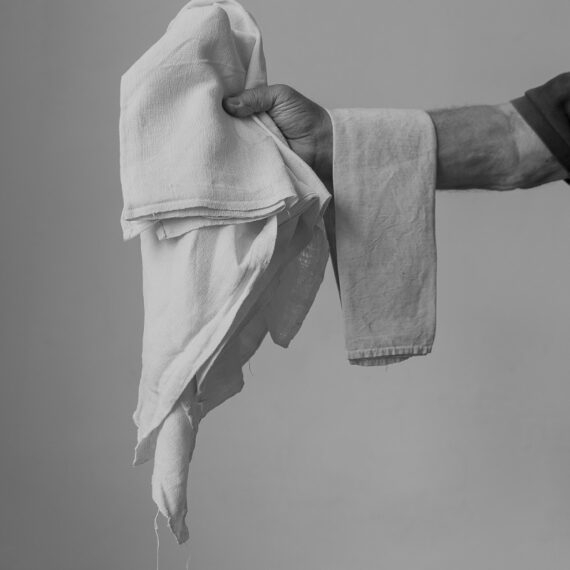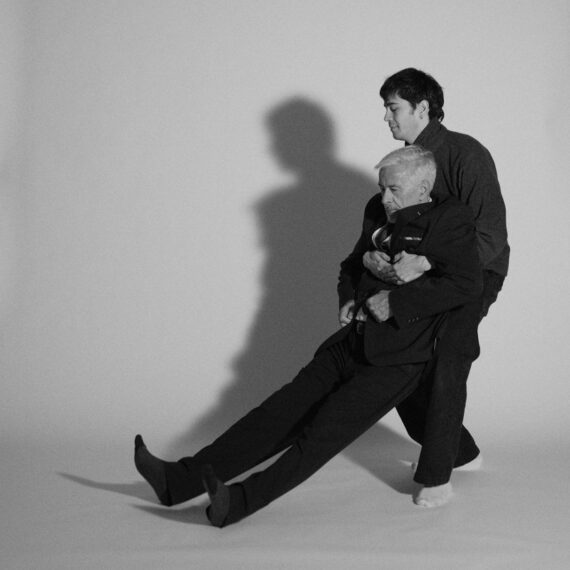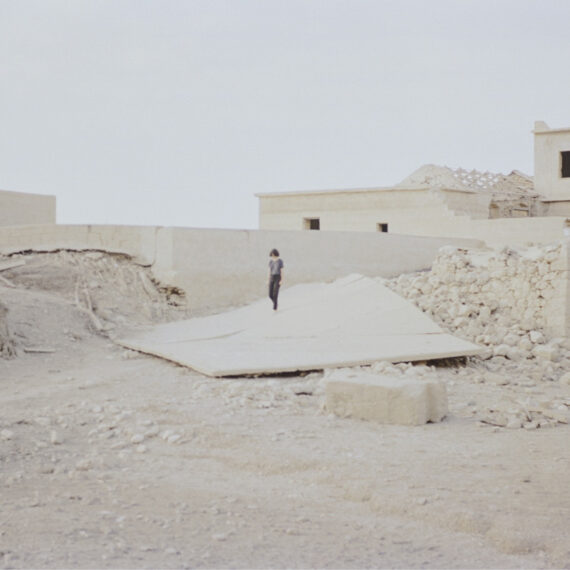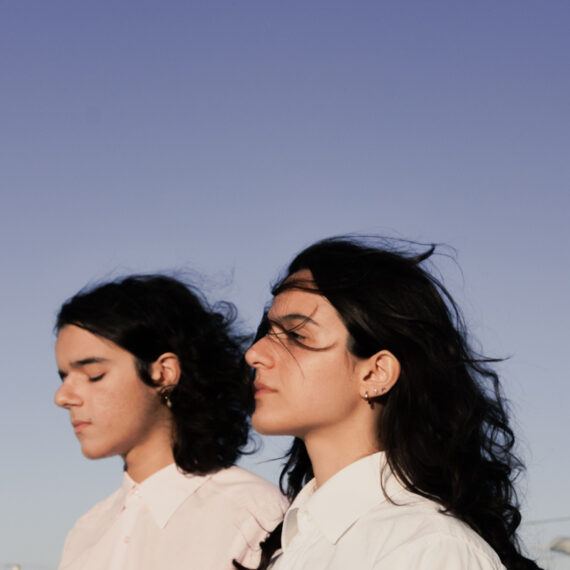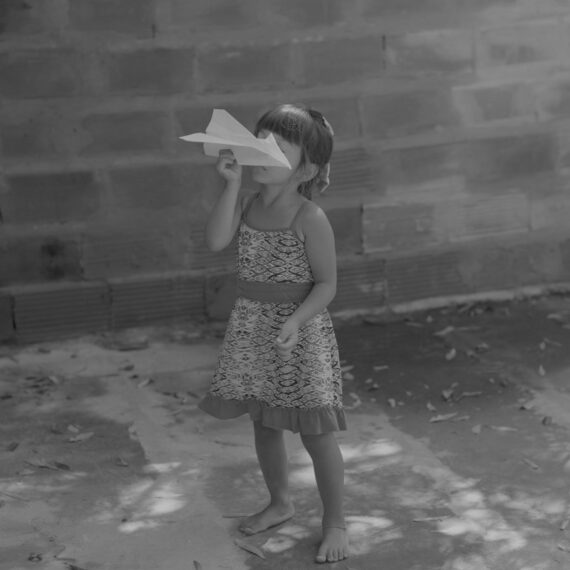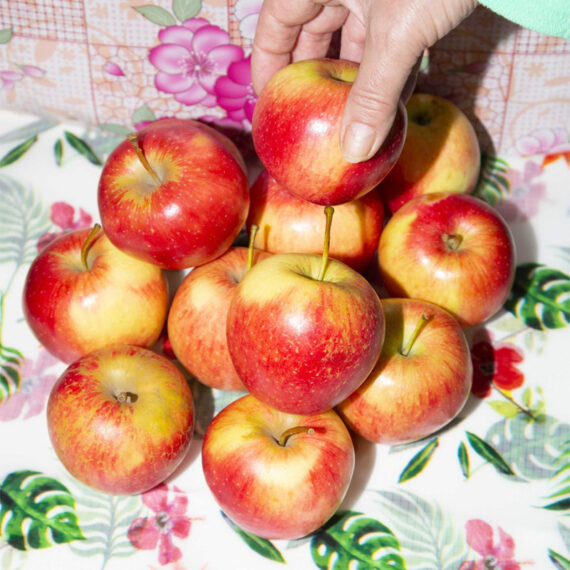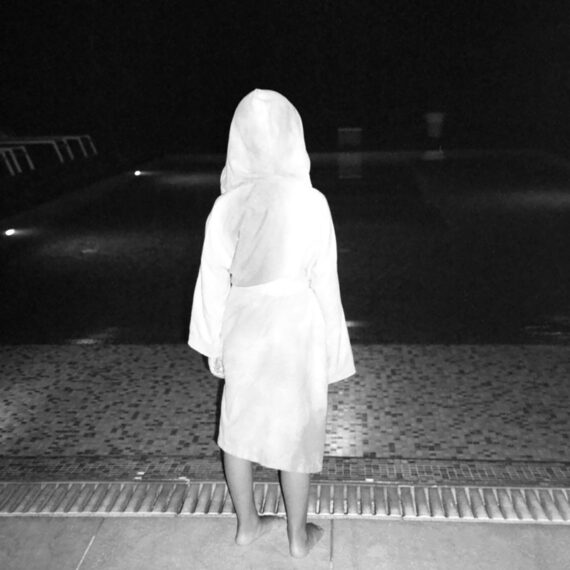Daniele Cimaglia e Giuseppe Odore
La dote di Latera
The inhabitants of Latera, where until the 1950s the cultivation of cannabis sativa for textile fiber production was central to the local economy, took part in a participatory art project. Many families still preserve handwoven fabrics passed down through generations. We asked the residents to donate some of these often unused textiles and collected stories related to the tradition of the dowry: the linen set that parents gave to their daughter for her wedding. The processing of hemp required collective organization. After harvesting, it was buried in the shores of the lake to macerate, transformed into fibers, and given to weavers. The collected stories testify to the importance of these fabrics as symbols of care, shared labor, and sustenance. The final artwork is a large sheet made by sewing together the donated fabrics, decorated with cyanotype prints that reconstruct a photograph of the seamstresses from the 1950s. This work pays tribute to the community of Latera and its traditions, highlighting how knowledge from the past can inspire solutions to contemporary challenges, such as pollution caused by the textile industry and fast fashion. Hemp, grown using natural methods, is a sustainable fiber that requires less water than cotton and promotes a circular economy. Traditions like those of Latera offer more ethical production models capable of healing the relationship between humans and the environment.
Rosa Lacavalla
La Festa dell’Equatore
An attempt to mend a piece of sky unfurling over an ocean of memories. Solid yet weightless, images float, carrying fragments of stories and cultures in constant motion. La Festa dell’Equatore is an initiatory journey, a crossing of boundaries, an invitation to immerse oneself in a continuous flow of transformations. An intimate fresco of a distant past, of family stories intertwined with contemporary narratives. At the same time, it becomes a metaphor for humanity’s search for a meeting point that turns out to be that imaginary line which simultaneously divides and unites, creating family constellations from one hemisphere to another. Past and present, reality and dream merge, projecting us towards a future yet to be written, while stars sing from the deep blue of eternity to the soul of the Ocean.
Sara Lepore
Ingrediente pentru un tort de miere, cu dragoste
A plastic tablecloth becomes a symbolic bridge, guiding the artist through a backward journey along his family tree, with a geographical, linguistic, and generational displacement. The disorder of photographs reveals a linguistic misunderstanding: in her mother’s photo archive, the artist discovers what she imagines – or wishes – to be a youthful love letter about her father. Written in a language that, although maternal, was never passed down to her, the letter turns out to be a small collection of recipes. This small recipe book becomes an opportunity to reconnect, after years, with her aunts in Romania and to cook with them in a context of total mutual incomprehension a cake that, once again, becomes an object of ambiguity. In the rush or emotion of the moment, what was supposed to be a honey cake ends up becoming an apple cake. The project thus documents the disorienting affection toward a lost familial identity. This reconnection is symbolically recreated through the table itself, a physical and metaphorical meeting place where language, food, and gestures serve as tools to rebuild a dialogue between past and present. By transforming misunderstanding into an opportunity for rediscovery, language becomes a tool for cultural and identity reclamation.
Grace Martella
Memorie del transitare
Memories From Transitioning is a visual project that explores intimately the artist’s journey through the gender affirming process, experienced as a transgender girl living in the South of Italy. The aim of the project is to collocate trans representation in a complex visual dimension supporting a central reflection on temporality. Visual standards and narrative codes are dislocated by tracing an emotional and metaphorical diary of “transitioning”, intended as a movement through space, time and gender spectrum.
The artist’s personal story is told by rewriting crucial experiences, processes and sensations such as birth, joy, anger, adolescence and solitude. By sublimating the story the chance to easily connect the images to a specific identity or body is not given to the spectator but a livable visual dimension that acts as a place for solidarity and emotional contamination is created. The artist’s body becomes a bridge through space, time and gender stereotypes: a vital body that changes shape and constantly re-signifies itself, that is tangible but also conceptual.
Erdiola Kanda Mustafaj
Pasqyra e Lëndës (Sommario)
This project made of fragmentary images I have taken over the past six years between Albania, Greece, and Italy, is presented here as a metaphor that invites the viewer to reflect on the circularity of time and history, between the overlap of disparate geographies and the intimacy of a complex meditative landscape, paradoxically arise the conflict between generations in perpetual motion. By focusing on politics and landscape, I want to draw attention to the significance of diaspora and its impact on the environment. In this series of photographs sublime atmospheres appears and disappears, some places has been transfigured, in some other we find rituals that shows a tension within the landscape, offering a double gaze, and building together a sort of archaeology of the outdated memory of the exile.
The exile is a detached figure, it escapes the coordinates of time, strike it, is continuously out of sync, ejected from the ancestral lands, this exotic figure embodies displaced memory, opening up to the creation of the myth resting somewhere through the truth and distortion. And memory became the sarcophagus from which emerge amorphous structures that tear apart the space of the visible, and the white shroud of photographic paper here becomes the sum of utopias lived and recounted a thousand times, shadows that wreck on the beach of memory like the relict of a ship.
Serena Radicioli
Non sei più tornato
On the evening of October 29th, two criminal groups met to settle scores over some debts,
which ended badly.
(“Latina Press”)
Two people died that night, one of them was my father. I never knew what his real job was. On the night of the incident, I was waiting for him, but he never came home.
I considered it normal not to see him return for a long time, just as I considered it normal to skip school to visit a prison and find him there. My father’s death was sudden and my family never talks about what happened. Even at the time it was never talked about.
I grew up with many questions about him until ten years later I started to do research and explore the facts. I searched his records, found files, photos, letters from prison, and reconnected with people who bring back his memory.
The project combines images from the public and family archives and pictures of my personal memories taken in the present.
Non sei più tornato (You never came back) is a collection of memories, events and facts that reveal through the eyes of a little girl the life choices of a father who was killed.
It is a project that speaks of the end of a wait, but also of a broken hope, transformed into an unbridgeable emptiness that asks to be chasing. My father never came home, that is the centre of my project.
Davide Sartori
The Shape of Our Eyes, Other Things I Wouldn’t Know
“For a long time, I saw my father as a stranger: someone I didn’t know how to talk to or spend time with. A few years ago, I found out about my grandfather’s premature death, when my father was coming of age, and how, because of that loss, he has been forced to follow the same career path. I realised that the absence of a traditional paternal model was something that both he and I had in common. So I decided to focus on the question: what does it mean to be a good father? Traditionally, the father has the responsibility to work and provide. Through this distancing from the family, often both physical and emotional, the archetypal man can fulfil his obligations, and thus, his role. In an attempt to create a connection with him, I visited his workplace and invited him into mine. The Shape of Our Eyes, Other Things I Wouldn’t Know takes form as a series of attempts to get closer to my father, both physically and emotionally.
The airport and the photography studio become the backdrops for our encounters, while photography serves as a key tool to explore our relationship, in a continuous exchange of roles. The project combines collaborative actions documented photographically, portraits, and archival material, brought together in eleven attempts to narrate an exploration that becomes mutual. Collectively, these images serve as tangible proof of our relationship, capturing both the distance and the need for connection.
The Shape of Our Eyes, Other Things I Wouldn’t Know wants to act as a bridge between generations, in which by facing the fear of seeing myself in my father, I become an example for him in terms of empathy. This project opens up questions related to vulnerability, seeks to question socially established norms, while aiming to activate a dialogue on intergenerational trauma, going beyond individual experience.”


